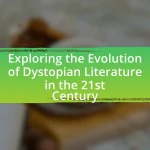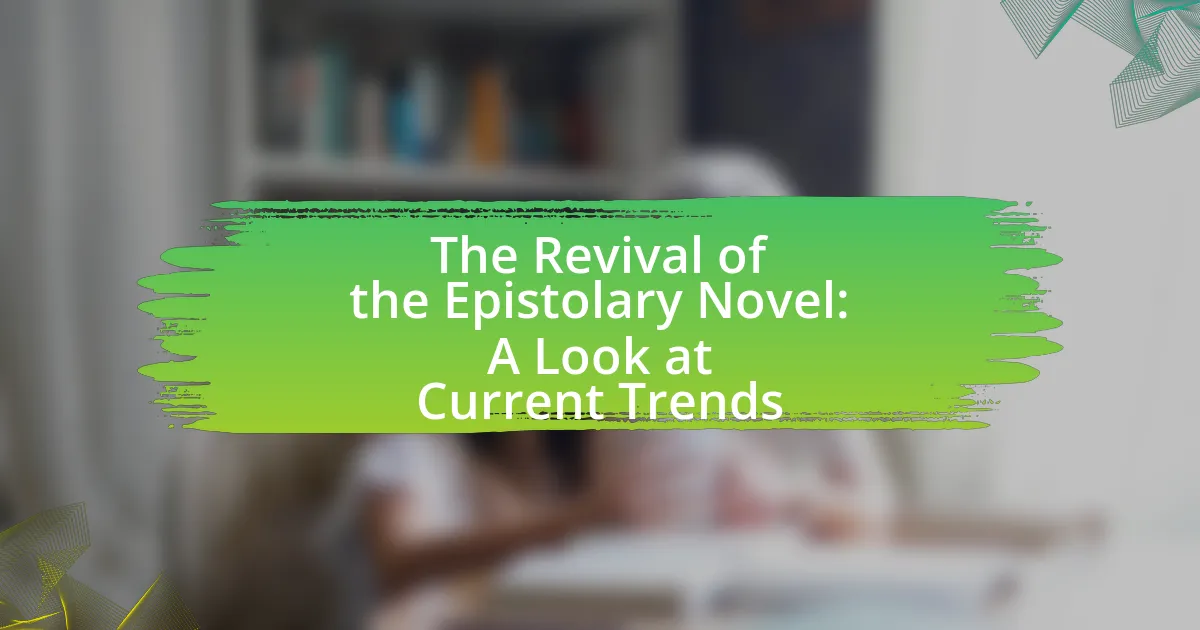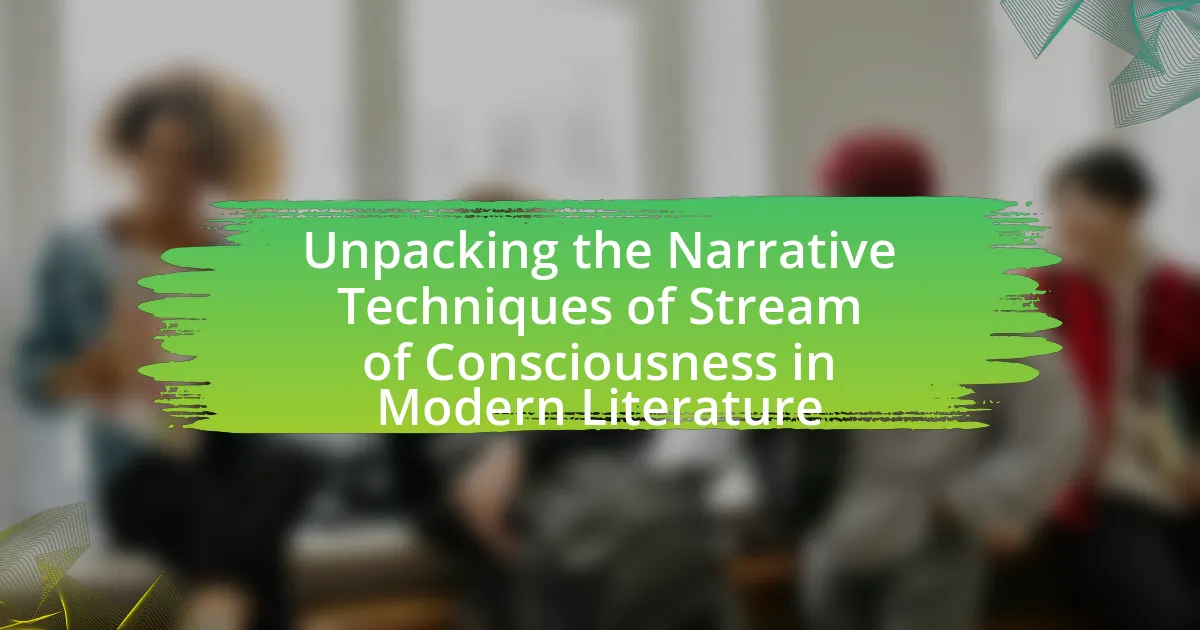Magical realism is a literary genre that combines magical elements with realistic settings, allowing extraordinary occurrences to be perceived as part of everyday life. Originating in Latin America during the mid-20th century, this genre reflects cultural and social realities while addressing complex themes such as identity, memory, and socio-political issues. Notable authors like Gabriel García Márquez and Isabel Allende have significantly shaped the genre through their influential works, which explore the coexistence of the ordinary and the extraordinary. The article delves into the characteristics, origins, and key themes of magical realism, highlighting its impact on literature and culture, as well as its evolution in contemporary writing.
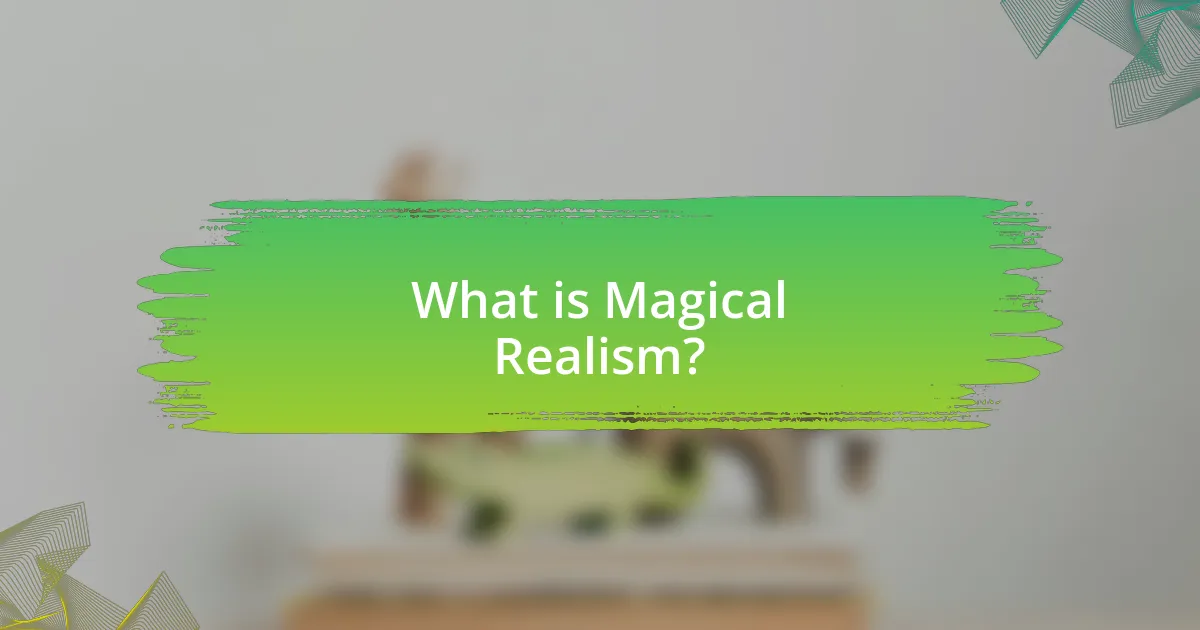
What is Magical Realism?
Magical realism is a literary genre that blends magical elements with realistic settings and events. This genre allows fantastical occurrences to be presented as a normal part of everyday life, creating a unique narrative style. Notable authors such as Gabriel García Márquez and Isabel Allende have exemplified this genre, with works like “One Hundred Years of Solitude” and “The House of the Spirits,” respectively, showcasing how magical realism can reflect cultural and social realities while incorporating supernatural elements seamlessly into the narrative.
How did Magical Realism originate?
Magical Realism originated in Latin America during the mid-20th century, primarily as a literary movement that blended magical elements with realistic settings. This genre emerged as a response to the socio-political realities of the region, particularly influenced by the works of writers such as Gabriel García Márquez and Jorge Luis Borges. The term “magical realism” was first coined by the German art critic Franz Roh in 1925, but it gained prominence in literature through the narrative styles that depicted extraordinary events as part of everyday life, reflecting the complexities of Latin American culture and identity.
What cultural influences shaped the development of Magical Realism?
Magical Realism was shaped by a blend of Latin American, European, and indigenous cultural influences. The genre emerged prominently in Latin America during the 20th century, reflecting the region’s complex history of colonialism, political turmoil, and cultural syncretism. Notable authors such as Gabriel García Márquez and Jorge Luis Borges incorporated elements of folklore, myth, and the everyday life of Latin American societies, which were often infused with magical elements. This blending of the ordinary and the extraordinary is rooted in indigenous traditions and the impact of European literary movements, particularly Surrealism and Modernism, which emphasized the exploration of reality beyond the surface. The cultural context of Latin America, characterized by its diverse ethnic backgrounds and historical narratives, provided a fertile ground for the development of Magical Realism, allowing it to resonate with both local and global audiences.
How does Magical Realism differ from other literary genres?
Magical Realism differs from other literary genres primarily by blending magical elements with realistic settings and events, creating a narrative where the extraordinary is treated as ordinary. This genre allows for the coexistence of the magical and the mundane, as seen in works like Gabriel García Márquez’s “One Hundred Years of Solitude,” where fantastical occurrences are integrated into everyday life without question. Unlike fantasy, which typically creates entirely separate worlds governed by different rules, Magical Realism maintains a connection to the real world, often reflecting cultural and social issues. This unique characteristic enables readers to explore deeper truths about reality through the lens of the magical, making it distinct from genres that prioritize either realism or fantasy exclusively.
What are the key characteristics of Magical Realism?
Magical realism is characterized by the seamless integration of magical elements into a realistic setting. This genre often features extraordinary events that are accepted as part of everyday life, blurring the lines between reality and fantasy. Key characteristics include the presence of magical elements that are treated as normal, a focus on the mundane aspects of life, and an exploration of cultural and social issues through a fantastical lens. Notable works, such as Gabriel García Márquez’s “One Hundred Years of Solitude,” exemplify these traits by depicting a world where the extraordinary coexists with the ordinary, reflecting the complexities of Latin American culture and history.
How do magical elements coexist with realistic settings in this genre?
Magical elements coexist with realistic settings in the genre of magical realism by integrating fantastical occurrences into everyday life, creating a seamless blend that challenges perceptions of reality. This coexistence is characterized by the normalization of magical events, where they are treated as ordinary aspects of the characters’ lives, as seen in Gabriel García Márquez’s “One Hundred Years of Solitude,” where supernatural occurrences are accepted without question by the characters. The narrative structure often employs a straightforward, realistic style that contrasts with the extraordinary elements, reinforcing the idea that magic exists alongside the mundane. This technique allows readers to explore deeper truths about human experience, as the magical elements often symbolize complex emotions or societal issues, thereby enriching the narrative and providing a unique lens through which to view reality.
What role do ordinary characters play in Magical Realism?
Ordinary characters in Magical Realism serve as the bridge between the mundane and the extraordinary, grounding fantastical elements in relatable human experiences. These characters often navigate a world where magical occurrences are treated as a normal part of life, which emphasizes the coexistence of reality and fantasy. For instance, in Gabriel García Márquez’s “One Hundred Years of Solitude,” the Buendía family embodies this blend, as they encounter supernatural events while dealing with everyday struggles, illustrating how the extraordinary can emerge from the ordinary. This interplay highlights the complexity of human existence and reflects cultural realities, making the magical elements resonate more deeply with readers.
Why is Magical Realism significant in literature?
Magical Realism is significant in literature because it blends magical elements with realistic settings, allowing authors to explore complex social, political, and cultural issues in a nuanced way. This genre enables writers to challenge the boundaries of reality, creating a space where the extraordinary coexists with the mundane, which can reflect the complexities of human experience. Notable works, such as Gabriel García Márquez’s “One Hundred Years of Solitude,” illustrate how this technique can convey deeper truths about identity, history, and society, making the genre a powerful tool for commentary and reflection.
How does Magical Realism challenge traditional narrative structures?
Magical Realism challenges traditional narrative structures by blending fantastical elements with realistic settings, thereby disrupting the conventional boundaries of reality and fiction. This genre often presents extraordinary events as ordinary occurrences, which forces readers to reconsider their understanding of reality and narrative coherence. For instance, Gabriel García Márquez’s “One Hundred Years of Solitude” integrates magical elements seamlessly into the everyday lives of its characters, illustrating how the extraordinary can coexist with the mundane. This approach not only subverts linear storytelling but also invites multiple interpretations, reflecting the complexity of human experience and cultural identity.
What themes are commonly explored in Magical Realism?
Common themes explored in Magical Realism include the blending of the ordinary with the extraordinary, the exploration of identity and cultural heritage, and the critique of social and political issues. This genre often presents magical elements as a natural part of everyday life, allowing for a deeper examination of reality. For instance, Gabriel García Márquez’s “One Hundred Years of Solitude” illustrates the cyclical nature of history and the impact of solitude on personal and collective identity, while also addressing themes of power and corruption. These thematic elements are essential in understanding the complexities of human experience within the context of Magical Realism.
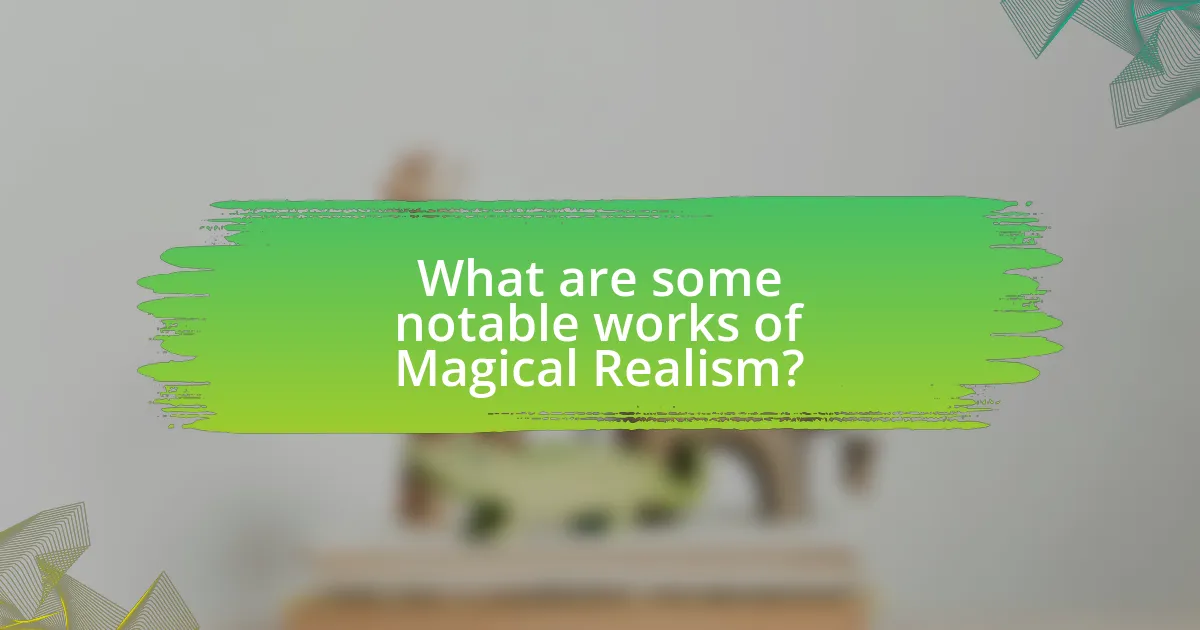
What are some notable works of Magical Realism?
Some notable works of Magical Realism include “One Hundred Years of Solitude” by Gabriel García Márquez, “The House of the Spirits” by Isabel Allende, and “Like Water for Chocolate” by Laura Esquivel. “One Hundred Years of Solitude,” published in 1967, is often regarded as a seminal text in the genre, blending the ordinary with the extraordinary in the fictional town of Macondo. “The House of the Spirits,” released in 1982, intertwines personal and political narratives, showcasing the magical elements in the lives of the Trueba family. “Like Water for Chocolate,” published in 1989, combines culinary traditions with magical occurrences, illustrating the power of food and love. These works exemplify the characteristics of Magical Realism, where magical elements are presented as a natural part of everyday life.
Who are the most influential authors in Magical Realism?
The most influential authors in Magical Realism include Gabriel García Márquez, Isabel Allende, and Jorge Luis Borges. Gabriel García Márquez is renowned for his novel “One Hundred Years of Solitude,” which exemplifies the genre through its blend of the fantastical and the ordinary. Isabel Allende’s “The House of the Spirits” incorporates elements of magical realism to explore themes of family and politics, while Jorge Luis Borges is celebrated for his short stories that often blur the lines between reality and fantasy, such as “The Aleph.” These authors have significantly shaped the genre, making it a vital part of Latin American literature and influencing writers worldwide.
What are the defining works of Gabriel García Márquez?
The defining works of Gabriel García Márquez include “One Hundred Years of Solitude,” “Love in the Time of Cholera,” and “Chronicle of a Death Foretold.” “One Hundred Years of Solitude,” published in 1967, is a landmark novel that established magical realism as a significant literary style, chronicling the Buendía family’s multi-generational saga in the fictional town of Macondo. “Love in the Time of Cholera,” released in 1985, explores themes of love and aging through the story of Florentino Ariza and Fermina Daza. “Chronicle of a Death Foretold,” published in 1981, presents a unique narrative structure that examines honor and societal expectations surrounding a murder in a small town. These works have garnered critical acclaim and solidified García Márquez’s status as a key figure in 20th-century literature.
How did Isabel Allende contribute to the genre?
Isabel Allende significantly contributed to the genre of magical realism through her seminal work “The House of the Spirits,” published in 1982. This novel intertwines personal and political narratives, blending the supernatural with historical events, which is a hallmark of magical realism. Allende’s use of rich, evocative language and her exploration of themes such as memory, identity, and the role of women in society further solidified her influence in the genre. Her storytelling techniques and character development have inspired numerous writers and expanded the global appreciation of magical realism, establishing her as a key figure in its evolution.
What are the key themes in notable works of Magical Realism?
Key themes in notable works of Magical Realism include the blending of the ordinary with the extraordinary, the exploration of cultural identity, and the examination of social and political issues. In Gabriel García Márquez’s “One Hundred Years of Solitude,” for instance, the cyclical nature of history and the impact of solitude on human experience are central themes. Similarly, Isabel Allende’s “The House of the Spirits” addresses themes of family, memory, and the intersection of personal and political histories. These works often utilize magical elements to highlight deeper truths about reality, illustrating how the fantastical can coexist with the mundane, thereby enriching the narrative and providing insight into human experiences.
How do these themes reflect cultural and social issues?
The themes in magical realism reflect cultural and social issues by intertwining the fantastical with the everyday, highlighting the complexities of identity, power dynamics, and historical context. For instance, Gabriel García Márquez’s “One Hundred Years of Solitude” illustrates the impact of colonialism and the cyclical nature of history in Latin America, showcasing how personal and collective identities are shaped by socio-political forces. Similarly, Isabel Allende’s “The House of the Spirits” addresses gender roles and class struggles, emphasizing the intersectionality of social issues within a magical framework. These narratives serve as a lens through which readers can examine real-world cultural conflicts and societal norms, making the themes not only relevant but also a powerful commentary on the human experience.
What role does memory play in these narratives?
Memory serves as a crucial mechanism in magical realism narratives, often acting as a bridge between the past and present. In these stories, memory shapes characters’ identities and influences their perceptions of reality, intertwining personal and collective histories. For instance, in Gabriel García Márquez’s “One Hundred Years of Solitude,” the Buendía family’s memories of their ancestors inform their actions and decisions, illustrating how the weight of history can affect the present. This interplay between memory and narrative structure enhances the thematic depth of magical realism, allowing readers to explore the complexities of human experience and the fluidity of time.
How have these works impacted literature and culture?
Magical realism has profoundly impacted literature and culture by blending fantastical elements with realistic settings, thereby challenging traditional narrative forms. This genre has influenced writers globally, encouraging them to explore complex themes such as identity, history, and social issues through a unique lens. For instance, Gabriel García Márquez’s “One Hundred Years of Solitude” not only popularized magical realism but also reshaped Latin American literature, leading to the Latin American Boom of the 1960s and 1970s, which brought international attention to the region’s authors. Additionally, the incorporation of magical realism into mainstream literature has fostered a greater appreciation for diverse storytelling techniques, allowing for richer cultural expressions and a deeper understanding of different worldviews.
What influence has Magical Realism had on contemporary writers?
Magical Realism has profoundly influenced contemporary writers by encouraging the blending of fantastical elements with realistic settings, thereby expanding narrative possibilities. This genre allows authors to explore complex themes such as identity, culture, and social issues through a lens that transcends the ordinary. For instance, writers like Salman Rushdie and Isabel Allende have utilized Magical Realism to address political and historical contexts, enriching their storytelling with layers of meaning that resonate with readers. The incorporation of magical elements into everyday life has become a hallmark of contemporary literature, enabling a deeper exploration of human experience and emotion.
How has Magical Realism shaped cultural perceptions in different societies?
Magical Realism has significantly shaped cultural perceptions in various societies by blending fantastical elements with realistic settings, thereby challenging conventional views of reality. This literary genre, prominent in Latin American literature through authors like Gabriel García Márquez and Isabel Allende, reflects and critiques social, political, and historical contexts, allowing readers to explore complex cultural identities. For instance, Márquez’s “One Hundred Years of Solitude” illustrates the cyclical nature of history and the impact of colonialism, influencing how Latin American identity is perceived globally. Additionally, Magical Realism has inspired movements in art and film, further embedding its themes into cultural consciousness and encouraging a more nuanced understanding of reality that transcends mere realism.
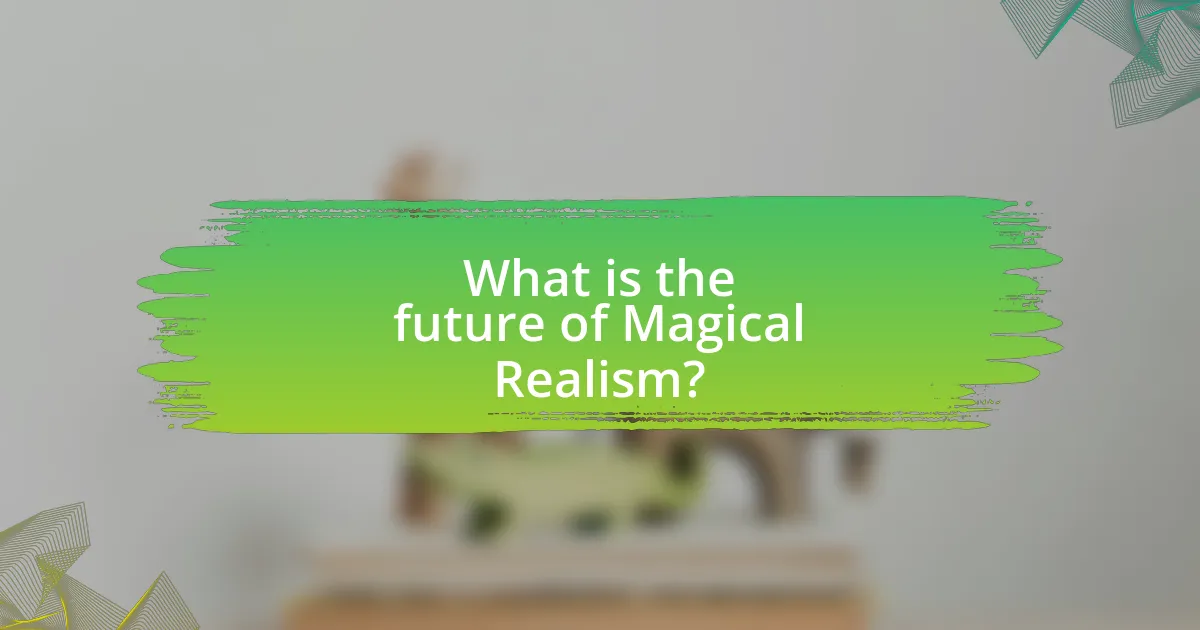
What is the future of Magical Realism?
The future of Magical Realism is likely to see a continued evolution as contemporary writers incorporate diverse cultural perspectives and modern themes. This genre, which blends magical elements with realistic settings, has been revitalized by authors such as Isabel Allende and Haruki Murakami, who explore complex social issues through fantastical narratives. The increasing globalization of literature allows for a broader interpretation of Magical Realism, as seen in works from various regions, including Latin America, Asia, and Africa. This trend indicates that the genre will remain relevant and adaptable, reflecting the complexities of modern life while maintaining its core characteristics.
How is Magical Realism evolving in modern literature?
Magical realism is evolving in modern literature by increasingly blending cultural narratives with contemporary issues, reflecting a diverse range of voices and experiences. This evolution is evident in works by authors such as Isabel Allende and Salman Rushdie, who incorporate elements of their cultural heritage while addressing themes like identity, migration, and social justice. Additionally, the rise of digital platforms has allowed for innovative storytelling techniques, enabling authors to experiment with form and structure, as seen in the works of writers like Ocean Vuong and Yaa Gyasi. This shift not only broadens the scope of magical realism but also makes it more accessible to a global audience, thereby enriching the genre’s tradition and relevance in today’s literary landscape.
What new themes are emerging in contemporary Magical Realism?
Contemporary Magical Realism is increasingly exploring themes of environmentalism, identity, and technology. These themes reflect current societal concerns, such as climate change, cultural hybridity, and the impact of digital life on human experiences. For instance, works like “The Overstory” by Richard Powers intertwine magical elements with ecological narratives, emphasizing the interconnectedness of nature and humanity. Additionally, authors like Mariana Enriquez delve into identity and trauma, using supernatural elements to address social issues in modern contexts. This evolution in themes demonstrates how contemporary Magical Realism adapts to reflect and critique the complexities of today’s world.
How are diverse voices reshaping the genre?
Diverse voices are reshaping the genre of magical realism by introducing varied cultural perspectives and narratives that challenge traditional conventions. For instance, authors like Isabel Allende and Toni Morrison incorporate elements from their respective cultural backgrounds, enriching the genre with themes of identity, history, and social justice. This infusion of diverse experiences not only broadens the thematic scope of magical realism but also attracts a wider readership, as evidenced by the increasing popularity of works from authors of different ethnicities and backgrounds. The result is a more inclusive genre that reflects a multitude of human experiences, thereby transforming the landscape of magical realism.
What can readers learn from Magical Realism?
Readers can learn about the intersection of reality and fantasy in Magical Realism, which emphasizes the coexistence of the extraordinary within the mundane. This literary genre often reflects cultural and social issues, allowing readers to explore complex themes such as identity, memory, and the human experience. For instance, Gabriel García Márquez’s “One Hundred Years of Solitude” illustrates how personal and historical narratives intertwine, demonstrating the impact of collective memory on individual lives. Through such narratives, readers gain insights into how magical elements can serve as metaphors for deeper truths, enhancing their understanding of both the characters’ realities and their own.
How can readers apply the themes of Magical Realism to their own lives?
Readers can apply the themes of Magical Realism to their own lives by embracing the coexistence of the extraordinary and the mundane in their daily experiences. This approach encourages individuals to recognize and appreciate the magical elements present in everyday life, such as moments of serendipity or profound connections with others. For instance, Gabriel García Márquez’s “One Hundred Years of Solitude” illustrates how the extraordinary can emerge from the ordinary, prompting readers to find beauty and wonder in their surroundings. By adopting this perspective, individuals can enhance their creativity, foster deeper emotional connections, and cultivate a sense of wonder, ultimately enriching their life experiences.
What are some recommended practices for engaging with Magical Realism?
To engage effectively with Magical Realism, readers should immerse themselves in the cultural and historical contexts of the works. Understanding the socio-political background of the author enhances comprehension of the magical elements intertwined with reality. For instance, Gabriel García Márquez’s “One Hundred Years of Solitude” reflects Latin American history and identity, making it essential to explore the region’s colonial past and cultural nuances. Additionally, readers should embrace the blending of the ordinary with the extraordinary, recognizing that the magical elements serve to highlight deeper truths about human experience. Engaging with discussions and analyses of the genre can also deepen understanding, as seen in academic critiques that explore themes of memory, identity, and the surreal.

![How [Author’s Name] Tackles Mental Health in Their Stories](https://hotkeyblog.com/wp-content/uploads/Featured-image-How-Authors-Name-Tackles-Mental-Health-in-Their-Stories-150x150.webp)
